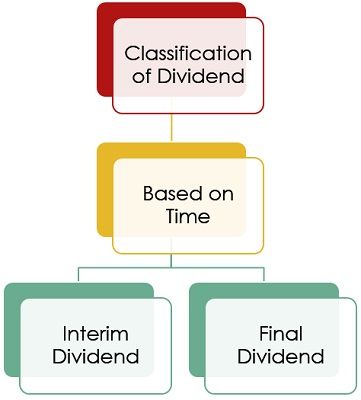Definition: Dividend can be defined as that portion of the corporation’s earning which is distributed to the shareholders as a return for the amount invested by them in the publicly listed company by purchasing its shares.
In finer terms, it is nothing but a section of the firm’s distributable profit, payable to the shareholders whenever announced.
It is distributed as a definite sum or as a fixed percentage of the nominal value of the shares, wherein the shareholders get the dividend according to the number and class of shareholding they have, in the venture.
The decision on the amount and time of dividend to be distributed among shareholders and its management is done by the company’s board. Further, the board also takes a decision on whether it is paid out of the current profit or the past earnings kept as reserves.
Whom it is payable?
The dividend is payable to the registered shareholder of the company or to his/her order or to his/her banking company.
What is the mode of payment of Dividend?
The dividend can be paid in cash, cheque, warrant or via any electronic platform to the shareholder entitled to receive it.
After discharging all the expenses and debts such as payment to creditors, banks, taxes and interest to debenture holders the company can use the remaining profit to provide a return to the shareholders on their investment, in the form of a dividend.
However, it is not mandatory for the company to pay a dividend, and so if the situations are not favourable, the company can skip the payment of dividend.
Classification of Dividend
The dividend is classified into different categories, based on the following factors:
Interim Dividend
The dividend which the Board declares amidst two Annual General Meetings is termed as Interim Dividend.
The dividend is announced by the company’s BOD (Board of Directors), in any financial year, during the period from the completion of the financial year to convening the Annual General Meeting. The dividend is declared out of the company’s profits, prior to the final closing of the books of accounts.
Final Dividend
When the dividend is proposed by the Board at the board meeting and announced by the Members of the company at the Annual General Meeting, it is called Final Dividend.
Once the dividend is declared at AGM it turns out as a debt, which a company is bound to pay to its shareholders. In case of non-payment of the dividend, the shareholders have the right to claim the dividend. But, the right to claim only arises when it is declared at the AGM, otherwise not.
- On the basis of mode of payment
The types of dividend on the basis of mode of payment are:
- On the basis of the nature of shares
Shares are divided into two categories – Preference Shares and Equity Shares. The way in which dividend is paid lies on the nature of shares:
Preference shares
A specified rate of dividend is guaranteed to the preference shareholders, during the period for which the shares are issued. Further, there are two types of preference shares, as regards the payment of dividend, they are:
- Cumulative Preference Shares: These shares are entitled to a definite amount of dividend, or dividend at a specified rate. If in a certain year, the dividend is not paid due to inadequate profits, then the dividend gets accumulated and the arrears are to be paid from the profits earned by the company in the following years.
- Non-cumulative preference shares: As the name suggest, these shares are entitled to a dividend at a fixed amount or rate. However, if the dividend is not paid in a specific year, then the right to earn dividend ceases in that year. Hence, no arrears of dividend is paid on such shares.
Equity Shares
Equity shares are the ordinary shares of the company having no preferential right on the company’s dividend. The Board of Directors of the company recommend the rate of dividend paid to these shareholders.
That is why, the rate of the dividend may change every year, which is based on a number of factors like dividend policy, residual profit, after making payments to preference shareholders.
Process of Dividend Payment
The process of dividend payment is discussed as under:
- The dividend is recommended by the Board of Directors in the Board Meeting.
- Thereafter it is announced by the Members at the Company’s Annual General Meeting.
- After the dividend is declared, the amount to be paid as the dividend is transferred by the company in a separate bank account, within 5 days from the date of its declaration.
- Now, within 30 days from the date of its declaration, the dividend is to be paid to the members.
- If, the dividend is not paid/claimed the unpaid/unclaimed amount is transferred to Unpaid Dividend Account, in a scheduled bank. However, if the company fails to do so, it has to pay interest @12% per annum, from the date of default in payment.
- Next, the company has to prepare a statement within 90 days from the deposit of an amount to the unpaid dividend account, listing the name, last known address of the shareholders and the amount of unpaid dividend and add the statement on the company’s official website as well as on the website approved by the Government in this regard.
- Lastly, if any money transferred to the Unpaid Dividend Account, remains unclaimed for 7 years, from the date the amount is transferred to the account, has to be transferred to Investor Education and Protection Fund (IEPF) along with the interest.
On the non-compliance of these requirements, the company may attract punishment with a fine, as well as all the officers of the venture conducting the default are also fined.


Leave a Reply